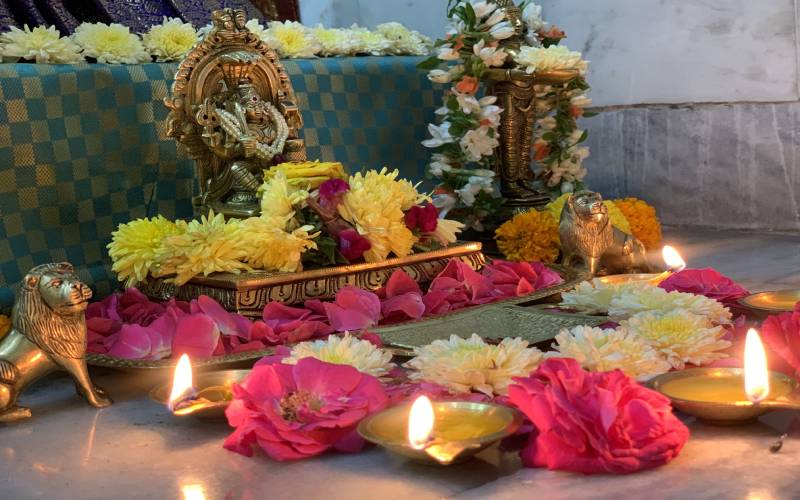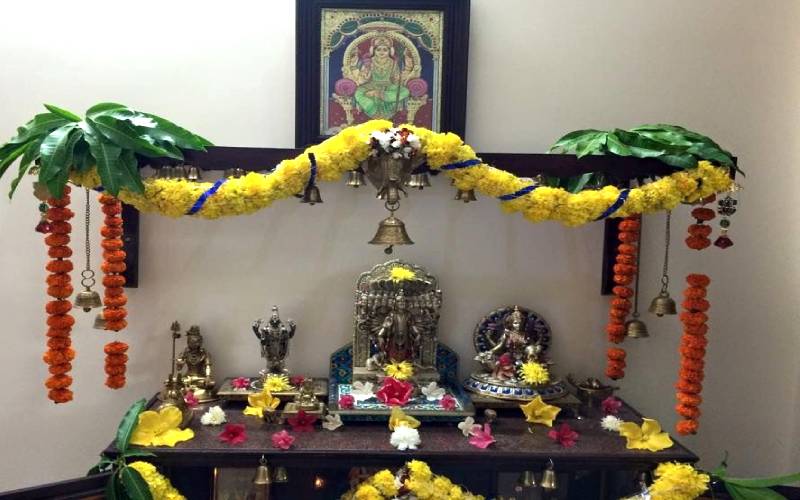
Going back in time, households would be endowed with a tiny open backyard. This backyard would accommodate a Tulsi plant on a platform and a few other flower bearing creepers or plants. It would be easy to water these plants, for the well and run off wastewater would be at a viewing distance. The families would be particular to have a few plants exclusively for the purpose of adorning the deities at home. This would include jasmine, oleander, and flowers like nandhiyarvattai.
The Semparuthi (Shoe flower) was also popular. One had to have a bath before plucking the flowers from a plant or a creeper. Flower bearing trees like paarijatham were also part of the household. Some of these flower bearing trees would be found at the entrance of the household. These flowers would make a fine floral carpet for the passers-by. Marammalli (Tuberose) would also add to the beauty of the household.
Kids, men, and women alike would pluck the flowers with utmost care. The use of nails was prohibited, and one had to be kind to the plant during the entire process. The collected flowers would be washed with fresh water, and one would look out for insects on them. The containers would then be taken to the prayer altar. The lady of the house would first light the lamps by invoking Goddess Lakshmi and then proceed to place the flowers to the deities who are resident of the pooja altar.
The family members would be advised not to smell the fragrance of the flowers while plucking them. All the flowers were normally offered to the deity before being used for personal decoration. The young girls, brides-to be and the married alike would make flower strands and place it in the pooja altar before using them for personal decoration.

Pooja flowers would also be bought at times. Not all houses would have flowering plants. Therefore, the lady of the house would buy flower strands and flowers for the household. Flowers would normally be sold in the village/town markets or in front of temples. A number of women would be involved in the flower business. Festivals and special occasions would see a brisk activity with regard to flowers.
Numerous concepts are applied with regard to the flowers used in the pooja. There are times when a group of women would decide to offer 108 types of flowers at the rate of one type per day. This would begin and end up in a botanical quest. Some types of flowers were deemed to be decorative and not suitable for worship. These flowers would never be mixed with the pooja flowers.
Guests and relatives coming home would be offered the flowers from the pooja altar. The old flowers known as the nirmaalyam would be decomposed separately or put into a water body those days. Even the flowers removed from the altar would be treated with utmost respect. Leaves like Tulasi and Vilvam would be used along with the flowers. Several types of leaves continue to be used in the worship of Lord Ganesha.
Jasmine strands are normally offered to the female deities on a full-moon day. Flowers have been part of the greater Indian tradition and they were offered to God every day. The usage of flowers for prayers gave route to floral commerce.
NEXT ARTICLE